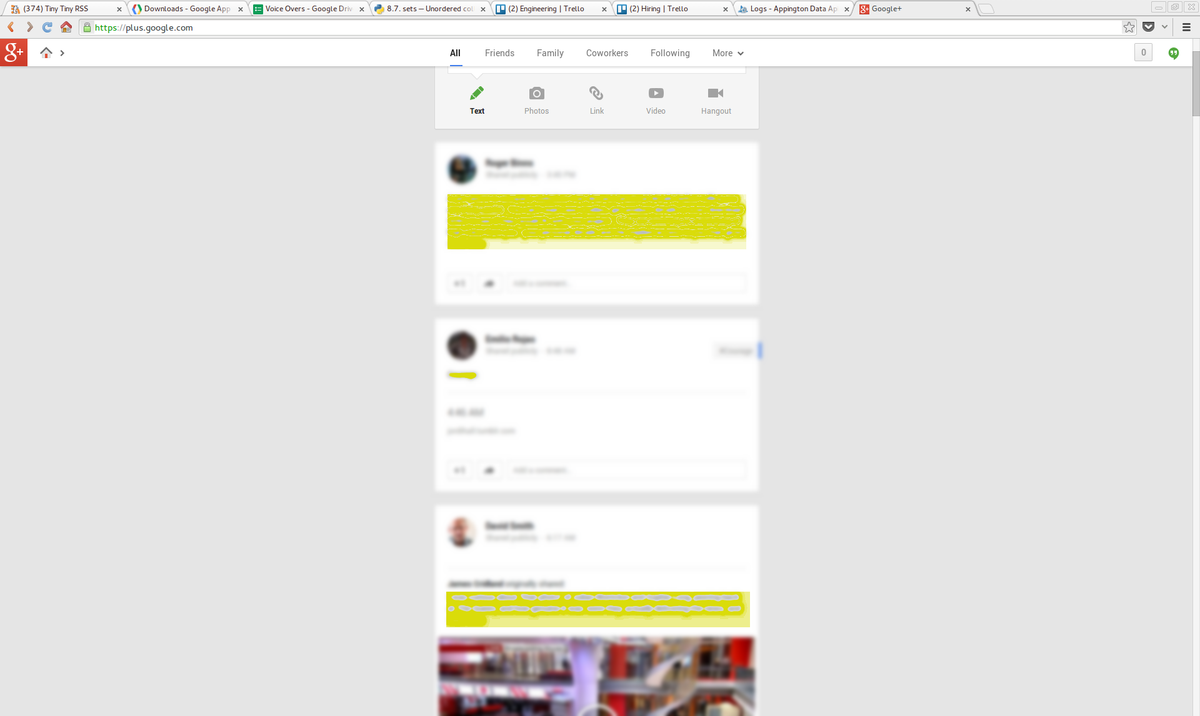Roger Binns — Sun 28 April 2013
I used to be the kind of person the computer industry cared about.
Hardware makers kept trying to give me more: cpu, memory, storage,
screens, pixels etc. Software makers kept trying to harness that
extra capability, providing new things for me to do, removing limits
on existing ones and new ways of combining, mashing up and remixing
what I have. They came up with multiple different ways of doing
things so you could pick what worked best for you.
Those days are completely over. Hardware comes with built in
obsolescence with non-expandable memory and storage. Screens have
regressed in resolution and surface area. Software makers are
optimising for small tablets using one program at a time with a
finger. They are battling to contain you within their walled garden.
They only provide one way of doing things, which helps reinforce the
walled garden and makes other systems seem alien. (Some changes have
been for the better which is apparent because everyone adopts them -
an example is typing a few letters and getting all relevant
applications, documents, contacts etc.)
This is even happening in the open source/free software world.
Canonical/Ubuntu has a CLA which ensures an unequal advantage to them
if you want to collaborate. Parts are kept private to keep up that
walled garden (Ubuntu One).
I'd been sticking to Gnome because it had historically been usable and
didn't have a walled garden agenda. Unfortunately the most recent
release (3.8) has finally become unusable, because they provide only
two modes - one completely unusable unless using a small screen with
fingers (that approximately no one has), and the second that imitates
the earlier more usable interface from back when things kept getting
bigger and better.
The latter fails because the developers so focussed on the first mode
completely missed what it was about the second that made it
productive. My main workstation has 4,000 square centimetres of
display space (compared to 160 for an iPad Mini 7 inch). Things are
hidden (eg system monitors and dropbox icons) that should be always
visible. Huge swathes of horizontal space at the top of the screen
are wasted. Attempting to use multiple copies of the same program are
an exercise is frustration. Even task bars (so far the least worst UI
paradigm for managing lots of open windows where many are from the
same app) is broken (eg can't drag and drop to reorder). Doing
anything involves more mouse movement, and more steps. Even the
workspaces don't show their contents or have keystrokes to switch.
The usual answer is that it is open and I can fix it. This is true in
the abstract sense, but not practically because it is obvious I am no
longer welcome. Heck I didn't really even want any changes, just for
things to be left as they were before they got too much worse.
Designers seem to be on a parallel course to make things worse. The
new esthetic is "flat" ui which means fewer pixels devoted to
highlighting the difference between ui elements. And the colour
schemes involve using various shades of gray on top of and next to
other shades of gray. 4,000 square centimetres of gray is not usable.
On laptops with worse colour differentiation it is even hard to
distinguish what is going on.
I've got six months to find the least worst productive environment. O
for the days when it was all about users like me.
Category: gplus
